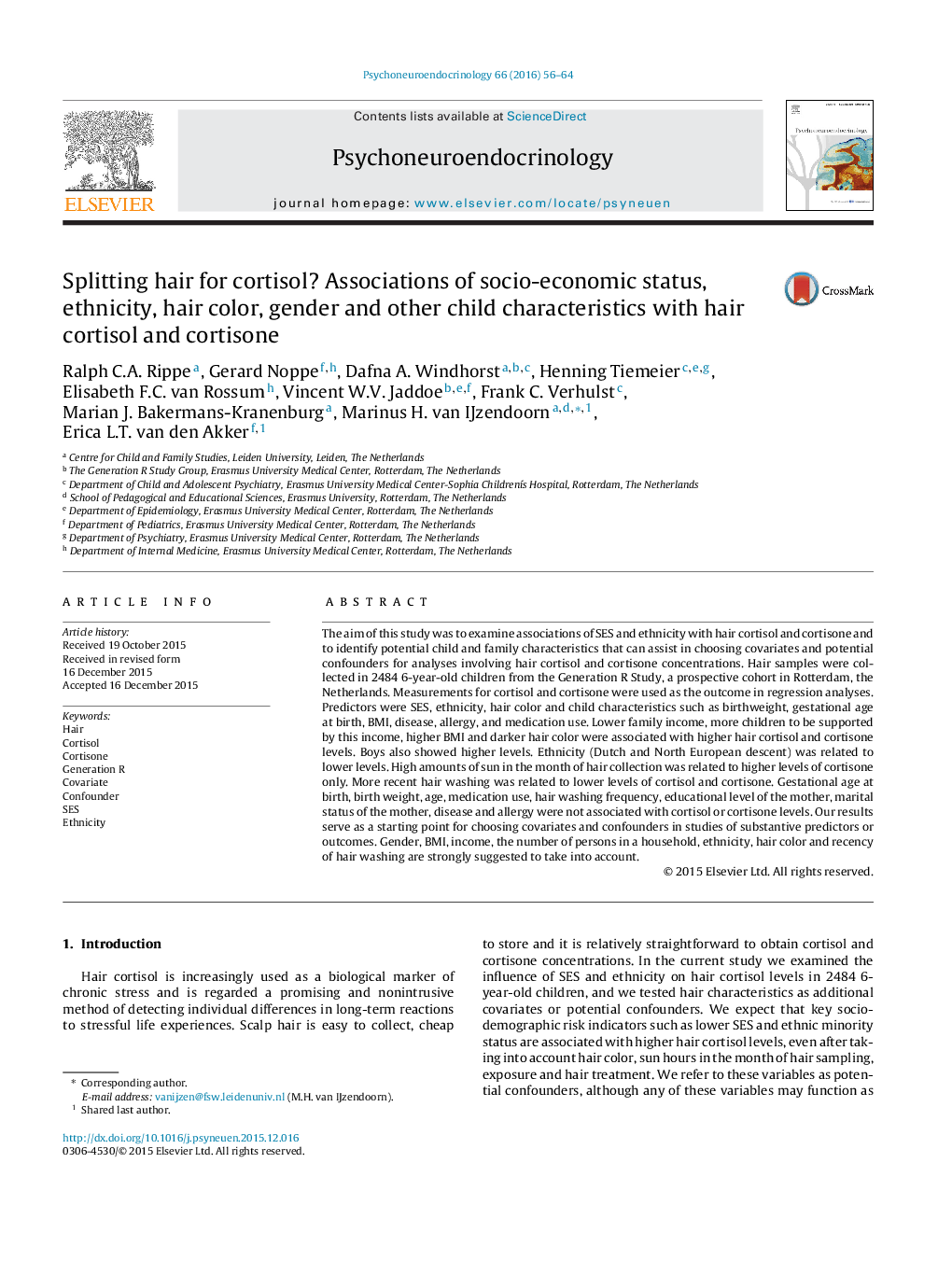| کد مقاله | کد نشریه | سال انتشار | مقاله انگلیسی | نسخه تمام متن |
|---|---|---|---|---|
| 336325 | 547112 | 2016 | 9 صفحه PDF | دانلود رایگان |
• Potential correlates and confounders for hair cortisol and cortisone concentrations were assessed.
• Associations were tested in2484 participants in the Generation R study.
• SES, ethnicity, hair color, BMI and gender were associated with hair cortisol.
• Gestational age, birthweight, age, medication use and disease were not associated.
• The questionnaire CoMCoH is recommended for use with hair sampling.
The aim of this study was to examine associations of SES and ethnicity with hair cortisol and cortisone and to identify potential child and family characteristics that can assist in choosing covariates and potential confounders for analyses involving hair cortisol and cortisone concentrations. Hair samples were collected in 2484 6-year-old children from the Generation R Study, a prospective cohort in Rotterdam, the Netherlands. Measurements for cortisol and cortisone were used as the outcome in regression analyses. Predictors were SES, ethnicity, hair color and child characteristics such as birthweight, gestational age at birth, BMI, disease, allergy, and medication use. Lower family income, more children to be supported by this income, higher BMI and darker hair color were associated with higher hair cortisol and cortisone levels. Boys also showed higher levels. Ethnicity (Dutch and North European descent) was related to lower levels. High amounts of sun in the month of hair collection was related to higher levels of cortisone only. More recent hair washing was related to lower levels of cortisol and cortisone. Gestational age at birth, birth weight, age, medication use, hair washing frequency, educational level of the mother, marital status of the mother, disease and allergy were not associated with cortisol or cortisone levels. Our results serve as a starting point for choosing covariates and confounders in studies of substantive predictors or outcomes. Gender, BMI, income, the number of persons in a household, ethnicity, hair color and recency of hair washing are strongly suggested to take into account.
Journal: Psychoneuroendocrinology - Volume 66, April 2016, Pages 56–64
